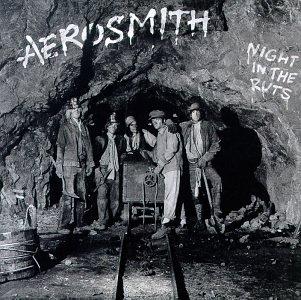
Night in the Ruts (1979)

1.No Surprize
2.Chiquita
3.Remember (Walking in the Sand)
4.Cheese Cake
5.Three Mile Smile
6.Reefer Head Woman
7.Bone to Bone (Coney Island White Fish Boy)
8.Mia
In the late 1970s, few rock bands embodied both the high and the low of fame like Aerosmith. Coming off the commercial and artistic success of Toys in the Attic and Rocks, the group found itself spiraling into a creative and personal nadir by the time Night in the Ruts was released in 1979. The contrast between the band’s peak and this troubled album is stark, and the result is a sobering testament to the toll that excess, especially drug use, can take on even the most formidable of talents.
The recording process was infamously chaotic. Guitarist Joe Perry left the band before the sessions concluded, a fracture that not only affected the group’s chemistry but also left a perceptible void in the music itself. The sense of urgency and creative verve that had defined their earlier work had all but vanished.
Where Draw the Line, the album preceding it, still managed to offer a polished if predictable sound, Night in the Ruts feels hollow. It’s not just uninspired—it’s disengaged. The band sounds as if they’re fulfilling contractual obligations rather than chasing musical breakthroughs. That one-third of the album consists of cover songs underscores this detachment; even these renditions lack the interpretive spark that once set Aerosmith apart. The choice of lead single, Remember (Walking in the Sand)—a Shangri-La’s cover—further highlights the album’s disconnection from the band’s core identity. It’s a stylistic outlier that feels more like a placeholder than a statement. One is left to wonder whether Aerosmith themselves knew what they wanted the album to be—or whether they had the energy left to care.
Only the final track, Mia, offers a glimpse of something more meaningful. Written solely by Steven Tyler, it’s a slow, haunting piece that suggests introspection—perhaps even regret. It’s not the kind of rock the band built its name on, but in its quietness, it communicates more than the rest of the album combined.
The album’s title is a pun—“Night in the Ruts” a play on “Right in the Nuts”—but the real irony lies in how appropriate that discomfort feels when listening. The decline chronicled here is not only musical but symbolic, representing a moment when a once-great band lost its way and nearly lost itself.